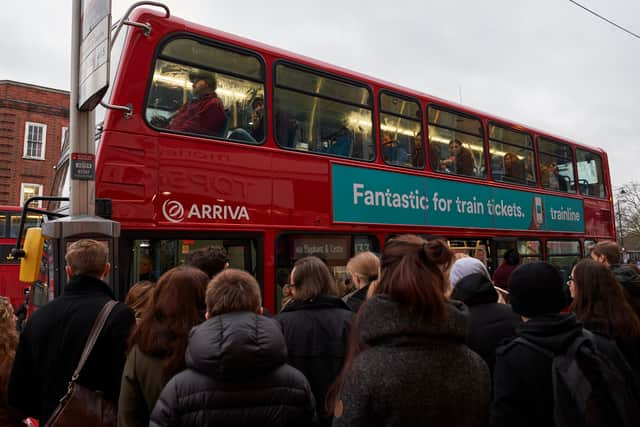TfL: ‘Significant projects’ needed to improve outer London transport options, committee told
and live on Freeview channel 276
Outer London is suffering from a lack of capital investment in its transport network compared to the city’s inner boroughs, a transport committee has been told.
If car dependency is to be reduced in areas such as Sutton and Havering, Transport for London (TfL) needs to improve its delivery of alternative transport options, it was claimed.
Advertisement
Hide AdAdvertisement
Hide AdDespite outer London boroughs comprising over 60% of the capital’s population, the access to modes such as buses and trains is limited compared to better-connected, inner London areas.
A report published earlier this year by the think-tank Centre for London found the lack of transport options in outer London is stopping millions of residents from travelling more sustainably.
The reliance on car ownership by many in outer London is central to much of the opposition to Sadiq Khan’s planned Ultra-Low Emission Zone (ULEZ) expansion, penned in for August 29 this year, after which date the whole of the capital will be incorporated into the clean air scheme.


At a London Assembly transport committee meeting earlier today (July 13), Seb Dance, the deputy mayor for transport, acknowledged the general disparity between inner and outer London regarding how available public and active transport options are to residents.
Advertisement
Hide AdAdvertisement
Hide AdHowever, he added Londoners are “lucky” due to the extensiveness of the network, with the capital having the largest bus fleet in Europe, and second globally to Shanghai.
Cllr Barry Lewis, a Liberal Democrat councillor from Sutton who chairs the borough’s environment and sustainable transport committee, told the chamber outer London had been “forgotten” in transport decisions, and had suffered due to a lack of capital investment when compared with inner London.
“If TfL wants to be serious about improving outer London transport, we need to start thinking about significant projects that we can work on,” he said.
Key to that, he said, is the need for more frequency of alternative transport options.
Advertisement
Hide AdAdvertisement
Hide Ad“This is why people will use their cars, because if they use the train, they will have to wait 15/20 minutes.”
Neil Stubbings, executive director for place at Havering Council, added as well as frequency, the quality of connections is essential when considering outer London transport limitations.
This is exemplified in Havering, he said, where to get from Harold Wood in the north of the borough to Rainham in the south, it takes an hour and a half and three buses to complete the trip.
“96% of all Londoners may be within four miles of a bus stop, but does that bus go where you need it to?” he said.
Advertisement
Hide AdAdvertisement
Hide AdWhen asked later in the same session on the impact the mayor’s planned Superloop will have on the outer London transport network, Cllr Lewis described it as “basically very welcome, it’s good news”.
However, he added the scheme is not without concerns, including how it would avoid getting caught in traffic.
Madeleine Stewart, policy and public affairs lead at Transport for All, and Alex Smith, head of campaigns at London TravelWatch, also both welcomed and raised doubts about the potential benefits of the Superloop, including the fact it does not go into every borough.
Mr Stubbings told Assembly Members (AM) he can’t comment on the scheme, due to there being no Superloop stops in Havering currently planned.
